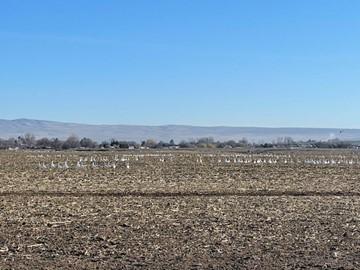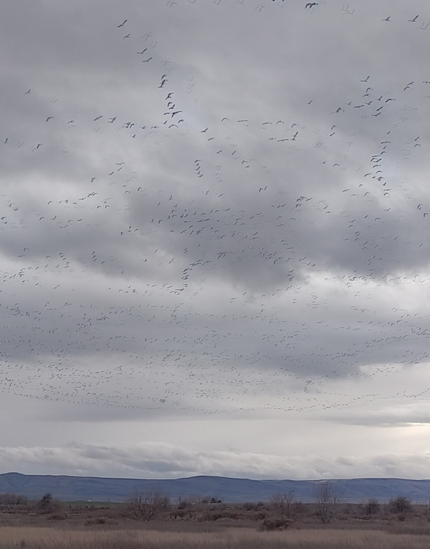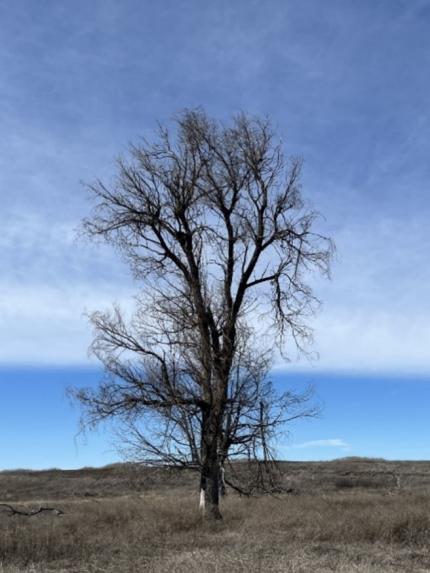
Wildlife Program report: Mar. 1-15, 2024
Conserving Natural Landscapes
The Fish and Wildlife Commission approved the acquisition of Phase 3 of Violet Prairie (90 acres in Thurston County), a new unit in the Scatter Creek Wildlife Area at the March 15 meeting. 4-lands-transaction-packet-3-15-2024.pdf (wa.gov) (PDF)
The Department of Fish and Wildlife (WDFW) is hosting a public meeting on the draft Skagit Wildlife Area plan at 6 p.m. on Wednesday, March 27 at the Burlington Public Library, located at 820 E. Washington Ave. WDFW engaged tribal governments, technical experts, key stakeholders, and members of its Skagit Wildlife Area Advisory Committee in the development of the draft plan. Once finalized, the Skagit Wildlife Area plan will guide stewardship for the 17,968-acre wildlife area for the next ten years.
Providing Education and Outreach
Lands Division staff members presented an overview of the L.T. Murray Wildlife Area Plan to the Fish and Wildlife Commission on March 15.
Lands Division staff members are reviewing vendor proposals for a second pilot year for the Ambassador Program. The Ambassador Program works with nonprofit partners to train and deploy volunteer “ambassadors” at high traffic recreation sites to provide welcome and education as part of an effort to encourage responsible recreation on department-managed lands.
Conducting Business Operations and Policy
Lands Division senior staff members held a retreat in Long Beach March 11 through March 13. They had a productive and in-depth reflection and strategic planning session that will inform our future work. Follow-up work to write up, share, and refine an annual calendar and the Strategic Priorities will continue over the next month.
Managing Wildlife Populations
Prairie Grouse: Biologists Lowe and Brinkman conducted a sage grouse lek survey this week to search for any remaining sign of sage grouse on the lek that was used by one male last spring. Unfortunately, no sage grouse were observed. Additionally, they searched the nearby Roseman sharp-tailed grouse lek site and no signs of sharp-tailed grouse were detected.
After conducting prairie grouse lek surveys in the early morning, Biologists Lowe and Brinkman completed a raven and raptor survey that consisted of 16-point counts evenly spaced along a driving route. Each count is performed for ten minutes and sightings of ravens and/or raptors are documented at each site. The intention of these surveys is to document the presence and monitor the trend of avian predators in sharp-tailed grouse habitat.

Bighorn Sheep: Biologist Lowe, with assistance from Officer Beauchene, retrieved a bighorn ewe carcass that was reported by a local landowner in Lincoln County. The landowner observed this animal acting somewhat sickly the day prior and then found it deceased the next morning. Because this animal was sick and the carcass is still intact, it provides a good opportunity for the Washington Animal Disease Diagnostic Laboratory (WADDL) in Pullman to conduct a full necropsy to determine the cause of death and examine the animal for signs of illness and/or injuries.
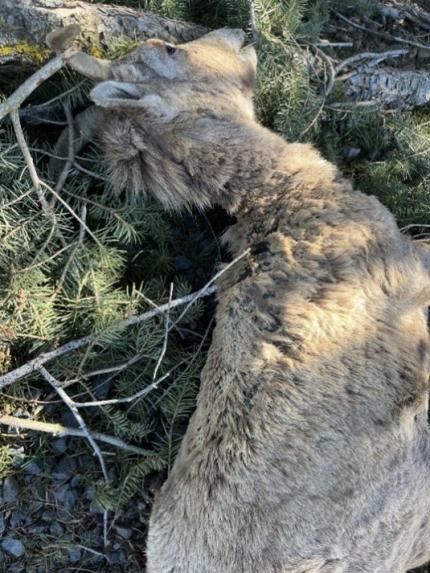
Grizzly Bear Handling Workshop: Wildlife Biologist Prince attended this year’s grizzly bear handling workshop hosted by the University of Montana and the U.S. Fish and Wildlife Service. The course covered different drug types used for handling bears, trap types, and many different scenarios for trapping both research and management bears.
Moose Calf Capture: Wildlife Biologist Prince, Ungulate Research Scientist DeVivo, Conflict Specialist Harris, and Wolf Biologist Roussin successfully darted a calf moose with a PVC fitting on its foot. The calf had the PVC on its foot for a few months and this was the second attempt at capturing it. The fitting was removed, and they released the moose on-site.
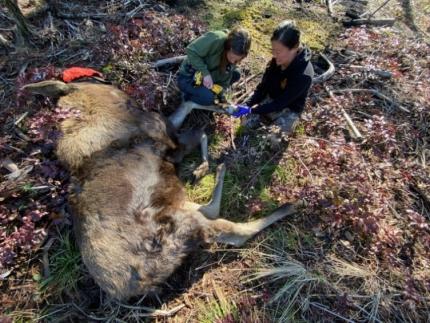
Providing Recreation Opportunities
Access Area Spring Cleaning: Region 1 Access Manager Dziekan reports spring cleaning with the spring fishing opener on the horizon. Work has begun prepping for spring clean-up projects to get the access areas ready for the public. The weather has been cooperative, which has allowed Dziekan to start running water through the pumps on the truck earlier this season than ever before.
The first, and most time-consuming, task is pressure washing vault toilets. Dziekan and Natural Resource Technician Brant have loaded the pressure washer into the truck and hooked the trash pump up to the pressure washer to be an entirely mobile cleaning unit. It takes a lot of water and about an hour for each toilet, compared to the five to ten minutes it takes for routine cleaning. The first step is bleaching the entire structure, inside and out.
Dziekan purchased a one-gallon sprayer designed specifically for bleach, along with a rain suit that fits Brant to protect his clothing from the bleach. Using about a 5% solution, the crew applies the bleach to the inside and outside of the vault toilet. This works to help remove the moss and mildew buildup on the outside of the structure, and clean and disinfect the inside of the structure.
They started the work at Newman Lake and will focus first on access areas that are open. Then they will move to the ones that haven’t opened for the season.
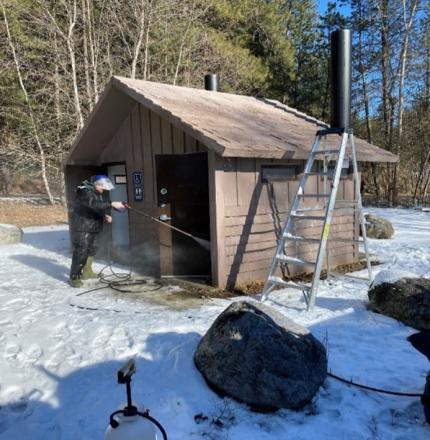
W.T. Wooten Wildlife Area Campgrounds and Parking Areas: Natural Resource Technicians Jensen and Tritt checked the campgrounds and cleaned up trash. They removed one of the locust trees in Campground 5 that split down the middle and was leaning over a picnic table. Additionally, they constructed buck and rail fence at Campgrounds 1 and 2 to keep the public from driving into areas outside of the campgrounds.
Jensen and Tritt cleaned up trash on the Hartsock Unit. They used the back-blade on the tractor to smooth the gravel in Campground 9 where a member of the public tore it up with what looks like an all-terrain vehicle (ATV). They also removed a tree in Campground 10. A member of the public started to chop it down with a hatchet.
Wildlife Area Maintenance: Sherman Creek Wildlife Area Assistant Manager Palmer traveled partway up Trout Lake and Bisbee Mountain Road on the Sherman Creek Wildlife Area and used his mini excavator to clear downed trees from roadways. This work is in preparation for spring gate opening on April 1.
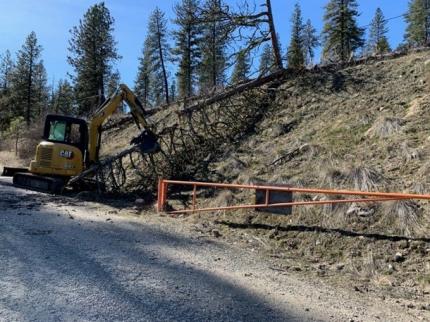
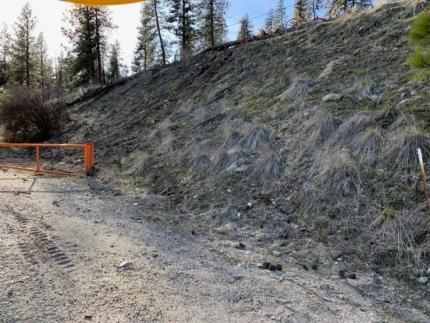
Providing Conflict Prevention and Education
Wildlife Conflict: Natural Resource Technician Heitstuman assisted Conflict Specialist Wade and Supervisor Earl in trapping and relocating 16 turkeys for a private landowner in the Clarkston. A second trapping is planned where turkeys are damaging gardens and getting aggressive with local homeowners and residents. About 30 head of mule deer are in the area as well.
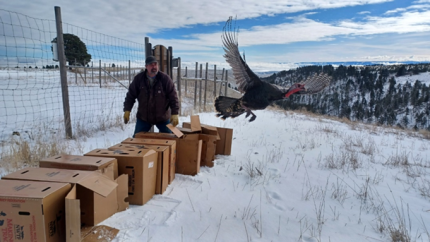
Elk Damage: Wildlife Conflict Specialist Kolb and Natural Resource Technician Moberg deployed zon gun cannons to alter elk movement patterns in Columbia County. The elk were not observed in the commercial crop fields following the deployment of the cannons.
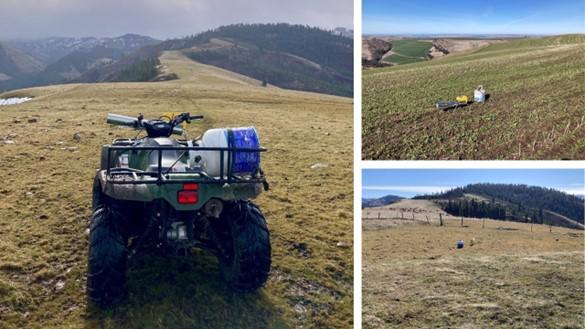
Conserving Natural Landscapes
Swegle Unit Restoration Project: Dingman spent the majority of a day at the Swegle Unit restoration project site with several Habitat Program engineers, Restoration Specialist Karl, and staff members from the Confederated Tribes of the Umatilla Indian Reservation (CTUIR). The group discussed the portion of the project that puts the West Little Walla Walla River back into a historic channel. They took several elevation points of the area so the Habitat Program engineers can put together drawings that will be used for permitting and putting the contract out to bid.
Conducting Business Operations and Policy
Administrative Duties: Access Manager Dziekan welcomed his returning career seasonal Natural Resource Technician Brant, back to work this week. Dziekan has already taken Brant into the field and is getting him caught up with required training.
Fence Contractor Meeting: Wildlife Area Manager Finch met with Capital & Asset Program Management (CAMP) Project Manager Johnston and four contractors to instruct them on a self-guided tour of the fence work that will need to be bid on. These contractors will decide which portion of the fence project to bid on and submit their bids within the next several weeks. The work will be in Areas 1 through 4 and includes the fences along Telford Road.
Managing Wildlife Populations
Artificial Burrows Ready for Owls: District 4 Wildlife Biologists Fidorra and Hoffman repaired and maintained artificial burrows for burrowing owls near Pasco prior to the breeding season. Due to the mild winter conditions, many owls over-wintered and remained onsite. This allowed Fidorra and Hoffman to recapture/band many adults during cleaning. Banding studies contribute greatly to our understanding of the survival and dispersal of this species.
Fidorra and Hoffman removed two non-functional transmitters that were placed on owls last season and stopped working.

Pasco Mitigation Project Gets Owl Approval: District 4 Wildlife Biologist Fidorra assisted the City of Pasco with their burrow mitigation project, which appears to be successful so far. Follow-up photos of burrows in late February already show at least one pair of owls using the newly installed artificial burrows!
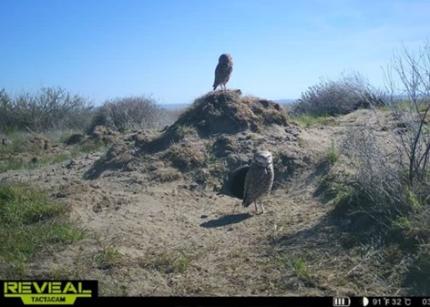
District 8 Bighorn Sheep Disease Testing: Disease results from February 2024, bighorn sheep capture and testing efforts in the Yakima Canyon population detected three Mycoplasma ovipneumoniae (M. Ovi) positive sheep. Of the three positive sheep, one was indeterminant in the 2023 capture year and will be removed in the coming weeks as an identified chronic carrier of M. Ovi.
District 8 Mule Deer Collar Retrievals: Assistant Wildlife Biologist Moore continues to work to retrieve dropped mule deer collars. These collars were part of a study designed to help inform scientists of mule deer migration and habitat use across the Okanagan-Wenatchee population.
Providing Recreation Opportunities
Wenas Wildlife Area Durr Road Shooting Range Development: Wenas Recreation Specialist Frame and Natural Resource Technician Janes picked up approximately 1,500 pounds of garbage from the Durr Road shooting area. They were cleaning the area prior to future construction. The shooting range will start development on March 18. Wenas Wildlife Area Manager Gray conducted outreach throughout the local area and to the Wenas Target Shooting Advisory Committee. Gray participated in a press interview regarding the shooting range for additional outreach to go out to the public.
Providing Conflict Prevention and Education
Rattlesnake Hills Elk: District 4 Wildlife Conflict Specialist Hand monitored for elk activity on the Hanford National Monument and adjoining private lands. Several reports of elk being observed outside the Hanford National Monument have been received. Two elk were reported harvested on damage permits.
District 4 Deer Hazing Equipment Return: Wildlife Conflict Specialist Hand coordinated with a tree fruit producer on the return of several acoustic alarms that were deployed on access points to their orchard.
Conserving Natural Landscapes
Wenas Wildlife Area Firebreak Maintenance: Wenas Wildlife Area staff members burned weeds along the fire break off Bull Pasture and Lower Buffalo areas and the Sheep Company Shooting Range. Old skeletons from Russian thistle and kochia are being burned. After the area is cleaned up, wildlife area staff members will be chemically treating the firebreaks to control weeds from growing this spring and summer.
Sunnyside-Snake River Wildlife Area Litter Removal: Sunnyside-Snake River Wildlife Area Assistant Manager Ferguson and Natural Resource Technician Cardenas have been occupied recently cleaning up the above-normal amounts of trash being deposited in different locations around the Sunnyside-Snake River Wildlife Area. They have devoted several days in recent weeks to garbage removal, including removing an entire semi-truck that was cut up into pieces and dumped in a pile on wildlife area lands.
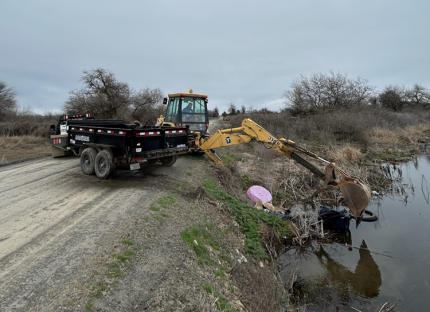
Sunnyside-Snake River Wildlife Area Culvert Failures: Sunnyside-Snake River Wildlife Area staff members discovered another culvert that rusted out over the past 30 years. Currently there are three of these water control structures that will require replacement to prevent further damage to access roads. Cultural Resource staff members surveyed these areas last week. Sunnyside-Snake River Wildlife Area Manager Kaelber will explore funding options and be working on the replacement of these structures in the summer months.
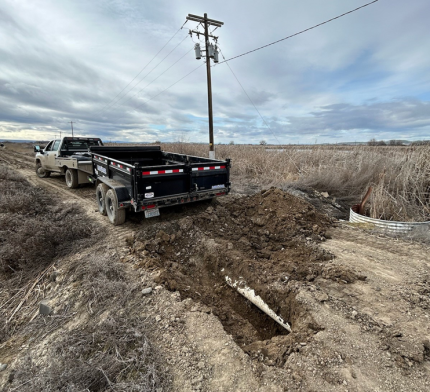
Private Lands Habitat Monitoring: Region 3 Private Lands Biologist Manderbach checked out two shrub plantings implemented last year by former Private Lands Biologist Hulett. Three separate areas were planted at the South Ridge Road Hunt by Written Permission site.
An existing Mule Deer Foundation plot was added to and cleaned up last year. Those shrubs are growing well with little space remaining for future shrub planting. Russian thistle and other debris caught in branches of the shrubs were removed.
The other two areas they visited were planted with riparian shrubs, which took a big hit from the deer and pronghorn but did show some life. The Rice Road Hunt by Reservation site was also checked by Manderbach. Sagebrush planted there has grown very well, but the site will have to be cleaned up and monitored more often to reduce the invasive weed pressure.
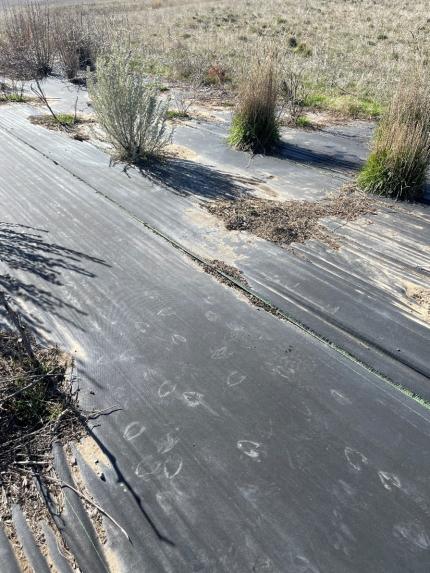

Providing Education and Outreach
District 4 Conflict Specialist Job Shadow: Wildlife Conflict Specialist Hand had a student ride-along this past week. The freshman student from the University of Idaho is interested in a career in Enforcement or Wildlife Conflict and wanted to get some exposure on each job class.
Washington State University Tri-Cities Conservation Biology Course: District 4 Wildlife Biologist Fidorra presented local conservation issues and shrubsteppe species information as a guest lecturer for the Conservation Biology class at Washington State University (WSU).
Other
Sunnyside Headquarters Unit Wildlife Viewing: March is a great time of year to observe migratory waterfowl at the Sunnyside Headquarters Unit. This year thousands of snow geese have been using agriculture fields and lakes within the unit. The wetlands have had very large numbers of pintail, mallards, and northern shovelers.
